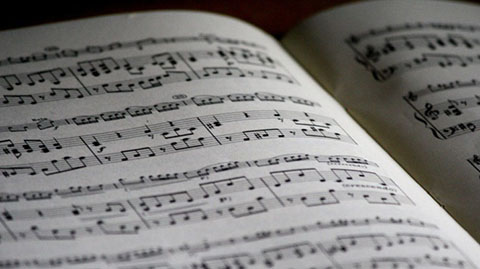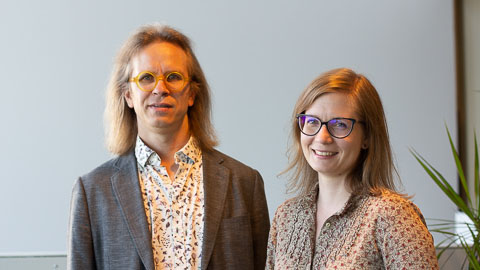Experienced Musicians Read Notes Only Slightly Faster – yet Difference Heard in Music
A musician's note reading speed and capability to effectively scan the notation are the keys to successful playing, found researchers as they were examining the music reading of players of different skill levels in an extensive experimental research project. Measurable differences in eye movements between beginner and professional musicians can be mere tenths of a second, but during that time a well-versed player has time to add flourish and play around with the music, interpreting it in their own manner.

The exceptionally large-scale eye tracking study carried out by the University of Turku and University of Jyväskylä reveals how an advanced music reader can skilfully predict upcoming segments while playing the music the listener is hearing. The project utilised an eye-tracking camera to study the note reading of hundreds of musicians while they played their instruments.
– We observed that the musician's eye movements shifted on the stave subconsciously and rapidly between the section being played and the notes that were coming up. While a musician is always under pressure to keep in time, they can nip off fractions of a second in order to glance forward on the notation and predict the upcoming melody, rhythm, or the more difficult sections of the piece, say Senior Researcher Marjaana Puurtinen from the University of Turku and project leader, Professor in Music Education Erkki Huovinen of the Royal College of Music in Stockholm.
Researchers examined the development of music reading skills and the differences between musicians, both beginners and professionals. Musicians representing a wide variety of instruments and genres participated in the study.
There was not always a marked difference between the experienced and inexperienced players in the simplest playing tasks. More pronounced differences in music reading skills came up only in the more demanding pieces. According to the researchers, even then the professional is separated from the beginner only by the capability to glance at different sections of the notation merely a few dozen milliseconds faster.
– This efficiency in music reading gives the player the opportunity to do more. During these fractions of a second, the faster music reader can add their own interpretation and style, as well as new feeling and flourish to the music. All those extra things that haven’t been coded into the notes, describes Puurtinen.
Part of the research material was gathered two years ago in a festival environment at Kaustinen Folk Music Festival in Finland.
– Folk music has traditionally been played by ear, but reading from notation has become more and more prevalent. However, it is common to add in flourishing and embellishments that are not present in the notation. It takes a skilled musician to accomplish that. In our research, this seems to be reflected in the manner with which the player reads the notation, says Puurtinen.
Broadest Basic Research on Visual Processes of Music Reading
According to Puurtinen and Huovinen, earlier research on music reading eye movements during performances has been minimal. Studies with such expansive and varied data have not been conducted ever before.
– The notations in earlier studies have usually been so complex that it has been difficult to get at the actual mechanisms that affect performance. We wanted to simplify the scene. In our studies, professional musicians played compositions that could be categorised as children's songs. This allowed us to explore the factors that affect the successful reading of notes, says Huovinen.

The researchers consider the study conducted in the initiative to be valuable new basic research, but both have already set their sights on further research. As experts in education and musical pedagogy, Puurtinen and Huovinen are especially interested in how the research could be applied to learning and teaching contexts.
In the Academy of Finland consortium Reading Music: Eye Movements and the Development of Expertise (2014–2018), the eye tracking studies were conducted both at the University of Turku eye-tracking laboratories and as field work. Taking part in the initiative bringing together pedagogy, musicology and statistics were the University of Turku, the University of Jyväskylä, the Royal College of Music in Stockholm, and the University of Regensburg in Germany.
LR/MS
Photos: Pixnio and Liisa Reunanen